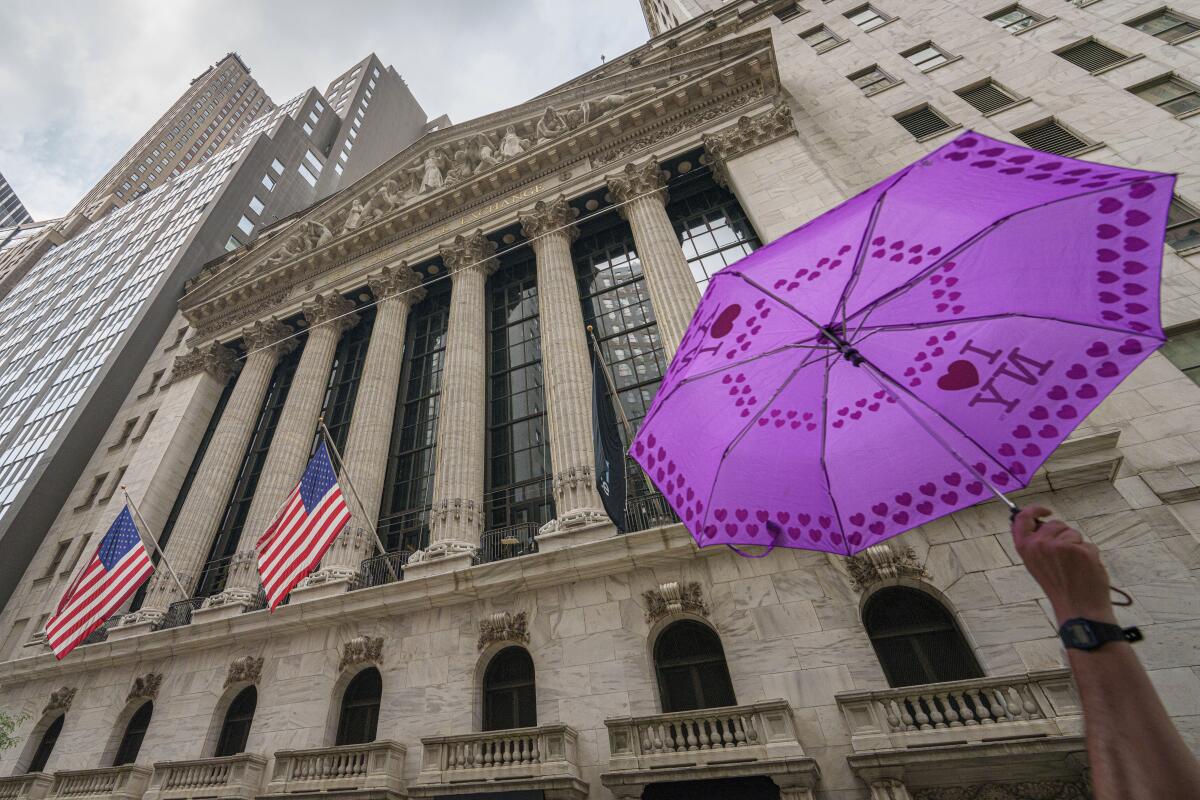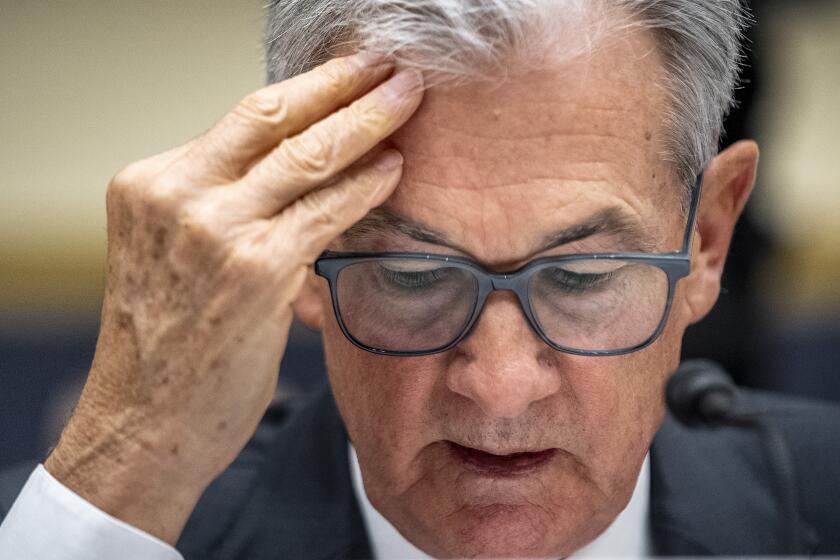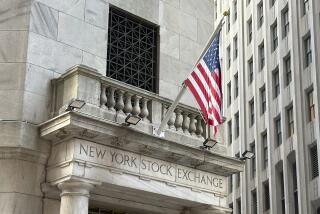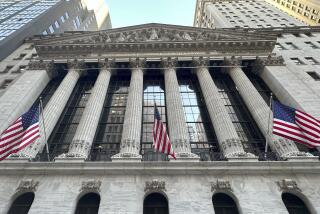Wall Street churns to a mixed finish after eagerly awaited inflation data

Wall Street churned to a mixed finish on Wednesday after an eagerly awaited report showed inflation accelerated across the country last month, but not by much more than expected.
The Standard & Poor’s 500 edged up by 5.54 points, or 0.1%, to 4,467.44 after flipping between small gains and losses a few times through the day. The Dow Jones industrial average dropped 70.46 points, or 0.2%, to 34,575.53, and the Nasdaq composite rose 39.97, or 0.3%, to 13,813.59.
The modest moves followed a shaky immediate reaction across financial markets to the inflation report, in which bond yields and stock prices swung back and forth several times. The report said U.S. consumers paid prices last month that were 3.7% higher than a year earlier, up from July’s inflation rate of 3.2%.
That’s discouraging for shoppers paying higher prices, but much of the acceleration was because of higher fuel costs, which can swing very sharply and quickly. Ignoring those, underlying inflation trends still look to be pointing toward continued moderation, economists said. Inflation peaked last year above 9%.
A spike in gas prices pushed up inflation in August, yet most other costs rose at a more modest pace, evidence that consumer price increases overall are still cooling.
The inflation report was so eagerly awaited because it will help steer what the Federal Reserve does next on interest rates. The Fed has already hiked its main rate to the highest level in more than two decades, which hurts prices for stocks and other investments, and the hope on Wall Street is that inflation has cooled enough for it to be done.
Wednesday’s data probably keeps the Fed on track to keep rates steady at its meeting next week, said Gargi Chaudhuri, head of iShares Investment Strategy, Americas. It could also mean trends continue in such a way that the Fed does not hike rates any more during this cycle.
But she also said expectations among traders on Wall Street for cuts to interest rates next year may be too aggressive. Such cuts can act like steroids for stocks and other investments, but inflation is still above the Fed’s target of 2%.
“If anything, higher headline inflation is proof that the Fed will need to keep rates higher for longer and that heavy rate cuts next year are mispriced,” Chaudhuri said.
Even though economists are willing to ignore fuel costs when looking at inflation to find the underlying trends, households and companies don’t get the same luxury.
Economy’s solid growth could require more Fed hikes to fight inflation, says Fed’s Jerome Powell
The continued strength of the U.S. economy could require further interest rate increases, Federal Reserve Chair Jerome Powell said in a closely watched speech that also highlighted the uncertain nature of the economic outlook.
Stocks of airlines were struggling after a couple warned of the hit to profits they’re taking because of higher costs.
American Airlines cut its forecast for profits during the summer because fuel costs are running higher than it expected. It also had to pay about $230 million in retroactive pay to pilots after they ratified a new labor contract. Its stock fell 5.7%.
Spirit Airlines said it’s also paying higher fuel costs this summer than expected, roughly $3.06 per gallon instead of the $2.80 it had earlier forecast. It’s also been seeing steep discounting to fares during the last few weeks. That pushed it to cut its forecast for revenue during the third quarter, and its stock fell 6.3%.
Other airlines also sank, including declines of 3.8% for United Airlines and 2.8% for Delta Air Lines.
On the winning end of Wall Street were high-growth stocks that could be big beneficiaries if the Fed is indeed finished hiking interest rates. High rates hurt all kinds of investments, but they often most hurt technology companies and others promising big growth far out in the future.
Amazon climbed 2.6% and was one of the strongest forces pushing upward on the S&P 500. Microsoft gained 1.3%, and Nvidia rose 1.4%.
Moderna rallied 3.2% after it reported encouraging results from a trial of a flu vaccine.
In the bond market, the yield on the 10-year Treasury edged down to 4.26% from 4.27% late Tuesday. It had swung as high as 4.34% immediately after the inflation report.
The two-year Treasury yield, which moves more on expectations for Fed action, slipped to 4.99% from 5.02% late Tuesday. It also leaped earlier and was as high as 5.07% a minute after the inflation report’s release, as traders digested the numbers.
The report said that prices paid by U.S. consumers rose 0.3% in August from July, after ignoring costs for food, gasoline and other energy prices that can swing quickly. That was a touch faster than the 0.2% month-over-month inflation rate that economists expected.
In markets abroad, stock indexes fell modestly across Asia and were mixed in Europe.
AP writers Matt Ott and Elaine Kurtenbach contributed to this report.
More to Read
Inside the business of entertainment
The Wide Shot brings you news, analysis and insights on everything from streaming wars to production — and what it all means for the future.
You may occasionally receive promotional content from the Los Angeles Times.












